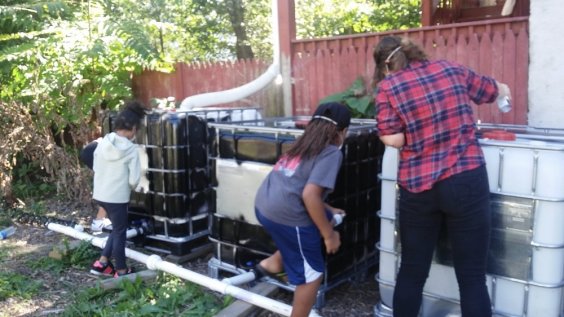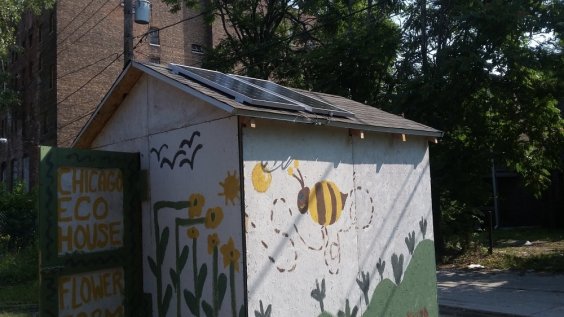From Flowers To Flourishing: How Urban Agriculture Is Bringing E-Stem To Chicago's At-Risk Youth
By Quilen Blackwell
President and Founder of the Chicago Eco House
Urban agriculture is an emerging sustainable industry that promises to cut lengthy transportation routes and increase food quality. Chicago is considered one of the United States' hubs of urban agriculture with a unique blend of readily available fresh water access, thousands of vacant lots throughout the city, and a strong food culture. This also makes urban agriculture a prime choice for applied E-STEM education as it gets youth outdoors in the dirt.
Despite the many well intentioned urban farms in the city, few are profitable and nearly all are unsustainable. There are several reasons for this including the difficulty in competing with Big Agriculture, restricted access to acquiring and rebuilding city-owned land, and intense competition for the highly niche restaurant/chef market. Most importantly, however, is the expensive operating costs of paying for water and electricity in an urban setting. This larger problem provides an ideal opportunity for applied innovation in E-STEM education as youth could learn real world concepts and help in a way that could ease some of the stress on urban agricultural development.
The Chicago Eco House is a nonprofit with the mission of using sustainability to alleviate inner city poverty. In order to do this, we have to think outside the box to develop income-generating solutions that offers E-STEM education for at-risk youth in some of the poorest and most crime ridden communities in America. We've identified one such solution: the market need for established flower farmers to use arable land in the city in order to grow their already successful businesses. In order to meet this market need, the Eco House set the goal of converting vacant lots into 100 percent sustainable and automated farms, something that hasn't existed in the city before.
This goal challenged us to develop innovative techniques that took advantage of the urban environment around us. We wanted to incorporate rainwater catchment irrigation systems because we calculated that a standard multi-unit brick building's roof could capture about 700 gallons of water when one inch of rain fell. Chicago generally averages about 34 inches of rain each growing season, so there was about 24,000 gallons of water that could potentially be captured off one building - more than enough to offset the irrigation needs for the entire farm system.
Once we knew that building a sustainable farm was possible, we partnered with Engineers Without Borders to figure out a technical plan to make the system functional. With their help, the Eco House was able to build an urban farm with a 1,100 gallon water storage capacity and a 300 watt solar panel system on 6,250 square feet of vacant land. Furthermore, we added moisture detection technology so the irrigation system wouldn't distribute water during an active rain event, which prevents wasted watering. This system saves thousands of gallons of water and hundreds of kilowatt hours a season while eliminating our operating costs.
Economically, we invested a one-time cost of $4,000 in completing the farm build out of the site we lease to farmers on a 70/30 percent revenue sharing agreement. On a space this size, an urban farmer can generate $20,000 a season by selling zinnias, sunflowers, dahlias, etc. to local flower shops. This is an awesome return on our $4,000 investment; we essentially guaranteed a perpetual annual income of $6,000 for the Eco House with no ongoing operating costs and we're only financially responsible for system maintenance.
This approach is also an example of creative applied E-STEM education. The Eco House trained at-risk, inner-city youth to steward our flower farms, which means they have to learn about renewable energy, water conservation, and basic engineering concepts in a real-world environment. Our youth are also financially motivated to participate. Of the Eco House's $6,000 revenue share, our youth receive $3,000 a season that is split amongst the team as a dividend payout while the rest of the money supports our operations. This induces youth entrepreneurship and creates green collar jobs in economically depressed communities while simultaneously expanding the tent of the sustainability movement as non-traditional environmentalist communities experience first-hand the benefits of going green.
This is the kind of innovation that must be embraced in order for sustainability advocates to remain relevant. It is not enough to simply teach youth in classroom settings. We must begin to view the wider community as our schools and the problems they face as our classrooms. This is the kind of education that will truly shape young environmentalists while making a real impact in advancing the goals of the larger sustainability movement.

